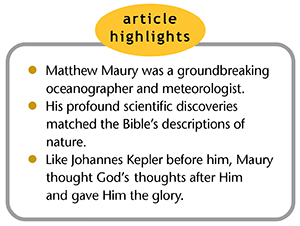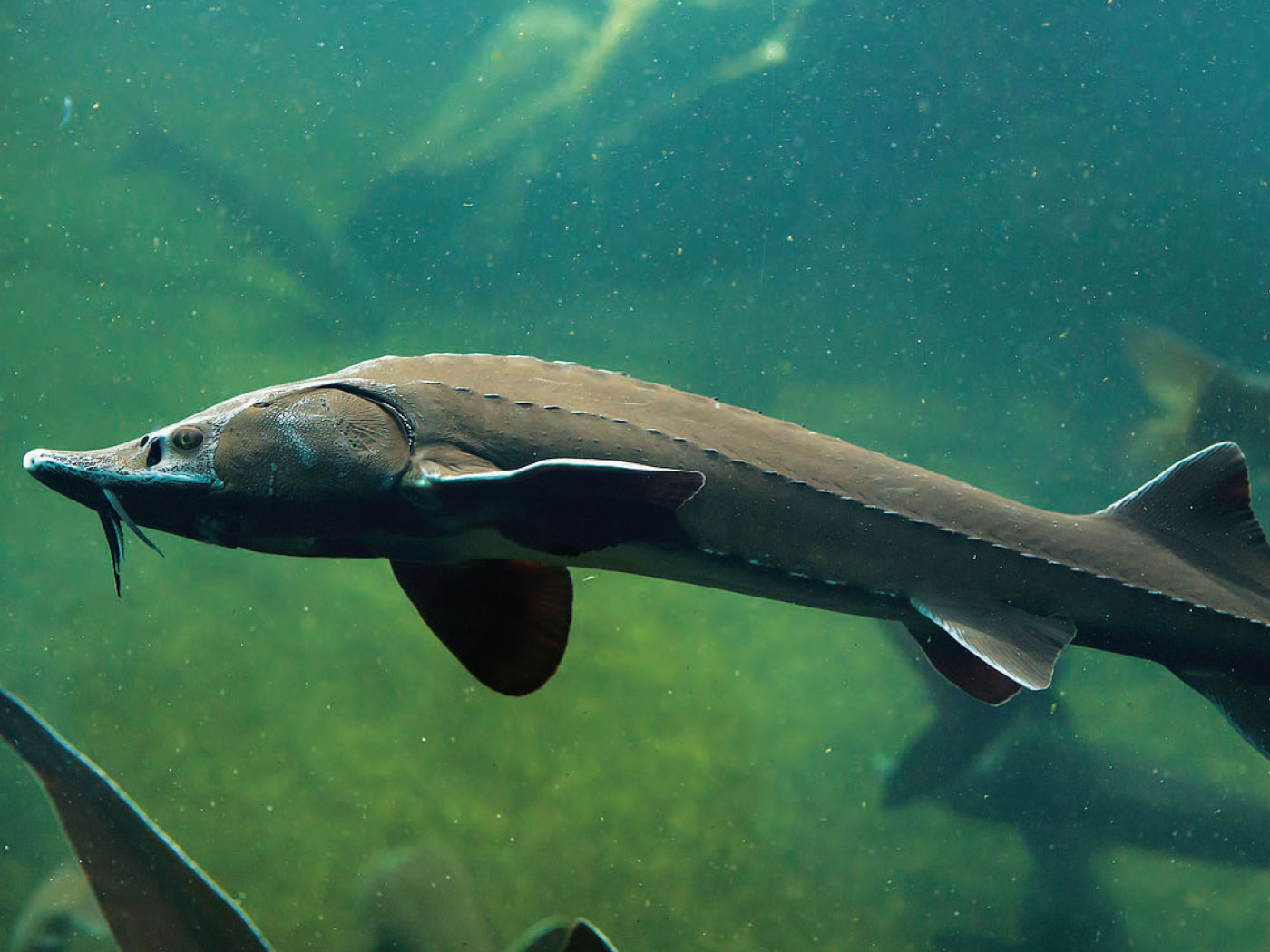 Today’s oceanography and meteorology owe a great debt to Matthew Maury. He exemplified the biblical principle that whatever we do, we should do it “to the glory of God” (1 Corinthians 10:31). Maury’s scientific research revered God’s Creatorship while benefiting his fellowman.1
Today’s oceanography and meteorology owe a great debt to Matthew Maury. He exemplified the biblical principle that whatever we do, we should do it “to the glory of God” (1 Corinthians 10:31). Maury’s scientific research revered God’s Creatorship while benefiting his fellowman.1
On a monument erected by the state of Virginia to his memory is found a plaque that reads as follows: “Matthew Fontaine Maury, Pathfinder of the Seas, the genius who first snatched from the oceans and atmosphere the secret of their laws. His inspiration, Holy Writ, Psalm 8:8; Ecclesiastes 1:6.”2
Genius indeed! Maury epitomizes the godly investigator whose creation science begins with the Creator’s written revelation—the Bible.3
I have been blamed by men of science, both in this country and in England, for quoting the Bible in confirmation of the doctrines of physical geography. The Bible, they say, was not written for scientific purposes, and is therefore no authority in matters of science. I beg pardon! The Bible IS authority for everything it touches.1
As a child, Maury was taught the Psalms at home, and that divine book of praises imprinted upon his intelligent, investigative mind. Decades later Maury would live out his lifelong commitment to doxological creation science.4 Maury recognized the Holy Bible as perfect in whatever it taught, including being authoritatively relevant and accurate in scientific matters.1,4 Among the insights he gleaned are:
- The Gulf Stream washes nutrients from the Gulf of Mexico into the North Atlantic, benefiting whales, seabirds, and other oceanic creatures. This illustrates the scriptural principle of God’s providential care for animals (Job 38:41; Psalm 147:9; Matthew 10:29; Luke 12:6).
- The general system of atmospherical circulation is referred to in Ecclesiastes 1:6.
- The water cycle matches Ecclesiastes 1:7.
- Atmospheric pressure is a geophysical reality mentioned in Job 28:25 as the “weight for the wind.”
- Maury’s most famous Scripture-based insight is that the oceans have subsurface currents with regular circulation patterns—the “paths of the seas” in Psalm 8:8.5
Maury trembled at the privilege of uncovering the logic God carefully built into His creation, noting that scientific discovery is discovering God’s own mind.
As a student of physical geography, I regard earth, sea, air, and water as parts of a machine, pieces of mechanism, not made with hands….And when, after patient research, I am led to the discovery of one of these [mechanisms], I feel, with the astronomer of old [Johannes Kepler], “as though I had thought one of God’s thoughts,” and tremble. Thus, as we progress with our science, we are permitted now and then to point out here and there in the physical machinery of the earth a design of the Great Architect when He planned it all.6
Virginia’s monument to Matthew Maury reminds us of his historic testimony and scientific achievements. The more important “monument” to his godly work is the ongoing impact of Maury’s life of reverent research in God’s service, which has secured for him “treasures in heaven” (Matthew 6:19-21).
References
- Major, T. J. 1995. Honor to Whom Honor…Matthew Fontaine Maury (1806-1873). Creation Research Society Quarterly. 32 (2): 82-87, quote from page 83.
- Gish, D. Paths of the Seas. Days of Praise, October 6, 1993. “One day, while reading Psalm 8, [Maury] was struck by an important truth in the 8th verse…‘the fowl of the air, and the fish of the sea, and whatsoever passeth through the paths of the seas.’ He immediately saw the great practical significance of that verse, recognizing that there must be currents of water in the oceans, just like vast rivers, as well as in the atmosphere (Ecclesiastes 1:6).”
- Maury, M. F. 1855. The Physical Geography of the Sea and Its Meteorology. Mineola, NY: Dover Publications, Inc.
- Johnson, J. J. S. An Oceanographer’s Insight, for Researching and Analyzing Oceanic and Littoral Ecosystem Dynamics, Guided by ‘High-Definition’ Biblical Philology, presented at the Creation Research Society Conference, Dallas, Texas, July 31, 2015, especially pages 3-13 and 17.
- Adapted from Major, Honor to Whom Honor, 85.
- Meyer, J. R. 1982. The Life and Philosophy of Matthew Fontaine Maury, Pathfinder of the Sea. Creation Research Society Quarterly. 19 (2): 91-100, quoting from page 95 (from Maury’s keynote address “at the laying of the corner-stone for the University of the South in the Sewanee Mountains in East Tennessee on Nov. 30, 1860”).
* Dr. Johnson is Associate Professor of Apologetics and Chief Academic Officer at the Institute for Creation Research.
















